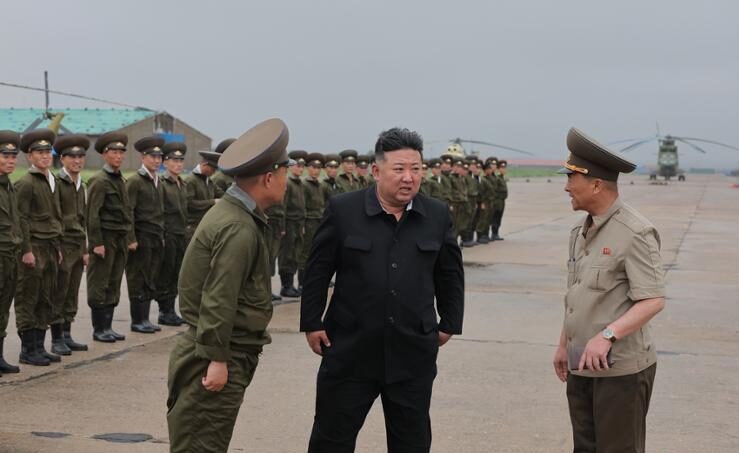WEB DESK: North Korean leader Kim Jong-un has visited flood-hit areas near the Amnok River and guided an operation to rescue around 5,000 isolated residents with the military’s helicopters, Pyongyang’s state media reported.
Kim visited flood-ravaged areas in Sinuiju City and Uiju County of North Phyongan Province on Sunday, after a record downpour hit the northern border of North Korea, according to the reports.
North Korea is vulnerable to natural disasters due to its lack of infrastructure, with heavy rains, in particular, displacing thousands of people in the impoverished country.
More than 5,000 inhabitants were isolated in areas vulnerable to flooding in the North’s border city and the county, as the water level of the Amnok River, also known as the Yalu River, exceeded a dangerous level, the report said.
In accordance with Kim’s order, the Air Force mobilized its ten-odd helicopters to make more than 20 rounds of shuttle flights to rescue residents.
The North’s leader “repeatedly stressed the need to rescue everyone. He also saw to it that reconnaissance flights were reorganized several times even in the areas where the rescue was completed,” as per reports.
As the pilots successfully rescued more than 4,200 residents, Kim said saving so many people in a span of half a day is an “unbelievable miracle and a model of air rescue operation,” the report said.
The North’s state media did not reveal details about casualties and property damage from the latest downpours. Photos carried by the KCNA showed water levels rising almost to the roofs of houses in a village and the four wheels of the SUV that Kim rode in to visit the affected areas being submerged in water.
The North’s leader also chided officials for failure to prevent damage from the latest heavy rains, even as he has ordered thorough measures to cope with natural disasters.
“He seriously pointed out that what should not be overlooked any longer is just the irresponsible and non-militant attitude of the public security organ responsible for thoroughly ensuring the life and security of the people,” the KCNA said.
North Korea held a crisis response meeting on July 22 to discuss measures to minimize damage that natural disasters could cause to crops and other agricultural products.
Kim designated some areas along the Amnok River in the North Phyongan, Jagang and Ryanggang provinces as “areas of special-level disaster emergency” and ordered related agencies to make all-out efforts to prevent damage from potential downpours and focus on recovery work.
South Korea’s unification ministry said North Korea has unusually unveiled details about its operation to rescue residents in the flood-hit areas.
“This appears to be aimed at prompting an image of Kim Jong-un as a leader caring for people and stressing the country’s systemic crisis management capability,” Koo Byoung-sam, spokesperson at the ministry, told a regular briefing.
He said more monitoring on North Korea’s situation is needed as its state media did not mention damage from the latest heavy rains on the country’s southern provinces of Hwanghae and Kangwon.
Typhoon Bolaven and heavy rain left around 300 people dead and some 600 injured or missing during June-August 2012, the unification ministry said, citing North Korea’s state media.
In 2020, North Korea was hit by three consecutive typhoons in the midst of the COVID-19 pandemic. Downpours pounded the western province of Hwanghae, considered the country’s breadbasket.
Last year, Kim Jong-un scolded Premier Kim Tok-hun for his “irresponsible” attitude over failure to prevent damage to farmland from Typhoon Khanun.


